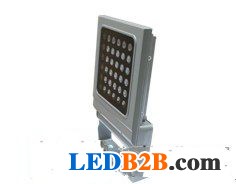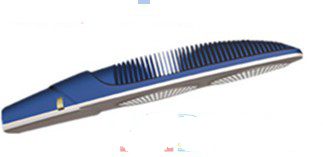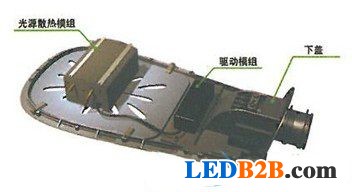First of all, for the external direct parameters of led products , discuss:
The temperature difference is large, and the surface temperature of the radiator is high--good? Is this correct? This cannot be generalized. It is necessary to make a specific analysis of the specific situation to determine whether this statement is correct.
Cooling has two purposes:
(1) The heat of the heat source is transmitted to the environment, and the ambient temperature is raised when the environment is heated. Such as heating systems.
(2) Transfer the heat of the heat source to reduce the temperature of the heat source as much as possible. High power led lamp with heat - this article for this product technical point of discussion descriptively.
For energy supply systems, the surrounding environment needs to be heated to a sufficiently high temperature. led high power lamp with cooling products, with the purpose of cooling HVAC, just a little turn. It may not be easy for the reader to understand immediately. After understanding this article, you may understand the principle of the previous sentence.
The purpose of heat dissipation of led high-power lamps is not to keep the temperature of the radiator as the target, nor to heat the ambient temperature, but to reduce the temperature of the heat source. Because of the heat dissipation, the temperature of the heat source can be lowered, and the temperature of the heat sink is naturally not high. Good heat dissipation design, after heat balance, the temperature difference between the heat source and the heat sink is small, and the temperature difference between the heat sink and the surrounding air is also small.
In the relevant formula for one-sided heat dissipation, the amount of heat dissipation is proportional to the temperature or temperature difference, and the temperature of the heat sink is increased based on this. When the heat source power is constant, to increase the temperature of the heat sink, it is necessary to reduce the size or radiation capability of the heat sink. However, the temperature of the heat sink is increased, although the temperature difference between the heat sink member and the air is large, but the temperature difference between the heat source and the heat sink is reduced, and the loss of heat per unit area and heat dissipation is actually ignored. The result: the temperature of the heat sink rises and the temperature of the heat source rises accordingly. This does not meet the original intention of thermal design.
Three goals for cooling:
1, heat source, heat transfer per unit area.
2, speed up the heat dissipation, heat transfer per unit time.
3, in accordance with the first two conditions, too high temperature difference between the heat sink and the heat source is also not desirable, at the cost of the cost, so it is recommended that the draft power within the appropriate temperature range of 40-50 degrees, is desirable.
Combine the actual products to explore the three goals of heat dissipation.
The temperature difference between the radiator and the air cannot be said in general terms. It depends on the situation to analyze it. If the fins of the heat sink are very thin and high, heat is difficult to transfer to the top of the fins, and the temperature at the top is low. In doing so, it is necessary to design the heat sink center and the heat sink. The distance should not be too far and as close as possible. (Figure 1, Figure 2 is an example, only for reference, I hope to refer to the thermal principle when making, and combined with the actual production experience, leave some margin when making samples, and continuously improve, which can shorten the product to market time).


Figure 1
Advantages: Uniform heat dissipation: in line with the principle of Article 2.
Disadvantages: The cost is very high. For high power above 90W, the heat effect is not good. The processing technology is too high, suitable for small and medium power floodlights, floodlights.


Figure II
Â
Advantages: large area of ​​heat dissipation, heat dissipation: it conforms to the principle of Article 1.
Â
Disadvantages: high cost. For high power of 60W or more, the heat effect is not good. The lamp housing is designed for lower than 100W led street light requirements.
Â
The third case:
Â
Although it appears that the temperature difference between the distal end of the heat sink and the heat source is actually large, the heat is not well transferred to the distal end of the heat sink. This large temperature difference, small area, long distance thermal path, the actual thermal resistance is very large, and the heat transferred to the distal end per unit time is very small.
Â
Although the heat dissipation area (fin) is increased, the thermal conductivity of the air is small, and the copper conduit is a long-distance conventional process. The contact area of ​​the copper strip is small, and the heat is mainly radiated through the lamp housing of the street lamp (the street lamp system is not recommended for air convection, But it is suitable for use in indoors instead of high-power halogen lamps, which is simply taken here.)
Disadvantages:
Â
1, the cover part is added, the air convection, but the sealing system is worse, it is also not a good design, in fact, more heat is concentrated on the fins, and not scattered into the air, or radiated out.
Â
2, bare copper tube, aluminum tube time life is shorter.
Â
3, the price is very expensive.
Â
4. Some add heat-dissipating liquid materials to the tube, which increases the cost, reduces the chance of repeated use, and increases the cost.


Figure III
Â
Improve:
Â
The fins are flat on the back and are sandwiched with aluminum strips or copper strips to meet the lamp cover. (See Figure 4)
Â
In doing so, the cost is higher than a part, but it makes up for the ills that need air convection and the accessories of the lamps are exposed.
Â
This proposal is suitable for the high-end product market (this article is aimed at the high-power led lighting civilian products, long-life lighting design discussion, if it is the high-end market product demand, there are other design methods, it is recommended that readers explore their own exploration, the principle is still based The three major goals mentioned above).


Figure 4
Â
The temperature of the heat sink, the formula will bring less doubt to the reader, should pay attention to the temperature of the position on the heat sink. Since the structure of the heat sink is different and the temperature on the heat sink is not uniform, it is difficult to say where the temperature can represent the temperature of the heat sink. It actually comes at the cost of high heat source temperatures. Readers do not want vague concept, but with less than high power led lights above the heat.
It is difficult to retrofit LED lights for traditional floodlights:
Â
1, the traditional floodlight, cast light fixture space structure is suitable for sodium lamps, metal halide lamps, high temperature resistance, more than one or two Baidu, are allowed, but LED can not do so.
Â
2, the back structure of the traditional lamp is generally curved, the heat dissipation center passes through the heat dissipating component, and is convected by air, and then transmitted to the lamp housing. In order to reduce the heat turnover distance, when the transformation is carried out, it is necessary to open the mold and set up the aluminum and copper bridges (the above mentioned points), so that the heat can be finally dissipated, but the processing cost is relatively high, the maintenance is troublesome, and the scale production is at the same time. Not allowed.
Â
3, the general lamp shell surface has paint, baking, heat dissipation, and the conductivity coefficient is greatly discounted.
Â
In order to better understand the idea of ​​heat dissipation, it is necessary to emphasize:
Â
The heat dissipation design of led electronic products is not based on the temperature difference, but on the temperature of the heat source. When you want to develop a light fixture, you need to have a bottom:
Â
1. It is required to control the temperature of the LED heat source below the degree, and continuously modify the coefficient of heat transfer (material part: aluminum, copper material, or graphite) to continuously change the area of ​​the heat sink.
Â
2. Shorten the conduction path of heat dissipation.
Â
3, the collection market needs products: quantity, power type, and then what process (precision machining, hemming, casting, or combination process, etc.).
Â
The company's experience talks:
Â
1, first led the kind of division of a large power lamps, which lamp housing on the number of W-quality power led lighting to achieve the production requirements.
Â
2, the new lamps, or ultra-high-power lamps, in the production of the model, combined with the thermal model, combined with the actual production situation, to do the heat-dissipation part of the lamp, to leave some margin (to leave some room for space), and then continuously test the heat source The temperature eventually reaches the high quality requirements.
Â
3, the power part should be combined with heat dissipation and beauty.
Â
Analysis of the problem can not be confused by the external temperature of the lamp. Consider various factors (the three major objectives mentioned above). Referring to the three major goals of heat dissipation mentioned above, the purchaser can polish the eyes and judge the quality of the lamp. Bad (touch, measure the temperature and other conventional means) for reference.
Â
The heat dissipation system is a combination of system design, engineering and experience. At present, which quality is reversed, which price is close to the price of traditional lamps, and which has a market.
Silicone Protective Sleeve,Silicone Sleeve For Glass Bottle,Silicone Water Bottle Sleeve,Bottle Silicone Sleeve
Nantong Boxin Electronic Technology Co., Ltd. , https://www.ntbosen.com